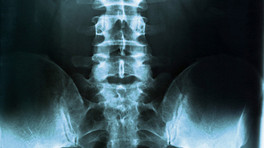Calcium is the most common mineral in the body, primarily found in bones and teeth. It is essential for maintaining the bone mass necessary to support the skeleton. The body is also constantly using calcium in muscle and nerve functions as well as to carry out functions in the heart. Most calcium is lost through normal bodily processes in the kidneys and colon, with minor amounts lost through sweat and the shedding of hair, fingernails, and skin.
If a person's diet does not include enough calcium to replace what is used, the body will pull from the stored supply of calcium in the bones, weakening them and increasing the risk of fracture. It is estimated that only 32% of adults in the U.S. receive enough calcium from their diet alone, and even with dietary supplements most people still do not receive adequate calcium intakes. 1 Bailey RL, Dodd KW, Goldman JA, et al. Estimation of total usual calcium and vitamin D intakes in the United States. J Nutr. 2010;140(4):817-22.
In This Article:
- Food for Thought: Diet and Nutrition for a Healthy Back
- Lifestyle and Diet Tips for Healthy Bones
- Calcium Is Needed for Strong Bones
Dietary Sources of Calcium
By eating a diet that includes adequate amounts of the following nutritional foods, a healthy level of calcium can be maintained through diet alone and without the use of supplements:
- Dairy products (yogurt, cheese and especially milk)
- Dark green leafy vegetables (spinach, broccoli and kale)
- Beans and peas (tofu, peanuts, peas, black beans)
- Some types of fish (salmon, sardines)
- Other foods rich in calcium (oranges, blackstrap molasses, almonds)
See Sources of Calcium in Food
If one is not eating enough of the above foods as part of a daily diet, calcium supplements may be a viable option to ensure there is sufficient calcium intake.
Obtaining the Right Amount of Calcium in the Diet
The recommended amounts of calcium for adults are as follows 2 Calcium: Fact Sheet for Consumers. National Institutes of Health Office of Dietary Supplements web site. https://ods.od.nih.gov/factsheets/Calcium-Consumer/. Updated November 17, 2016. Accessed March 3, 2017.
- Adults between ages 19 and 50: 1,000 mg of calcium per day
- Men aged 51 to 70 years: 1000 mg per day
- Women aged 51 to 70: 1200 mg per day
- Adults aged 71 and older: 1200 mg per day
Please note that consuming more than 2,000 milligrams of calcium per day can be harmful to the kidneys and cause kidney stones. 2 Calcium: Fact Sheet for Consumers. National Institutes of Health Office of Dietary Supplements web site. https://ods.od.nih.gov/factsheets/Calcium-Consumer/. Updated November 17, 2016. Accessed March 3, 2017. This does not occur when calcium is consumed in the recommended doses. Those who already have kidney disease should consult with a health professional before taking any supplemental calcium.
Preventing Osteoporosis
It is especially important for children and teens to receive enough calcium and other bone nutrients for proper development and strength of the bones. Over time, insufficient calcium and other bone nutrients in the diet significantly increases the risk of developing osteoporosis (thinning of the bone).
See Calcium Requirements for Kids' Growing Bones
Osteoporosis can result in fractures in the bones in the spine, which in turn can lead to chronic pain and possibly deformity. The risk of developing osteoporosis is higher for older women due to women’s generally lower body weight, lower bone mass, and hormonal changes that occur after menopause.
The process of maintaining strong bones involves the following steps:
- Obtain bone nutrients regularly in the diet by consuming quality foods and beverages that maximize absorption from the gut
- Reduce food and drink choices that interfere with bone nutrient absorption
- Incorporate lifestyle choices that improve bone integrity, such as adequate exercise and hydration while reducing salt and soda consumption
- Consider nutritional supplements if bone integrity is a concern
As a final note of advice, always consult a healthcare professional before changing diet or taking dietary supplements. Working with a professional will also help to develop and stick with a comprehensive program of consuming nutritious foods, avoiding excessive amounts of unhealthy foods, choosing the correct form and dosage of nutritional supplements (when appropriate), and engaging in regular exercise.
See Immunonutrition: Healing Nutrients for Back Pain and Spine Surgery
- 1 Bailey RL, Dodd KW, Goldman JA, et al. Estimation of total usual calcium and vitamin D intakes in the United States. J Nutr. 2010;140(4):817-22.
- 2 Calcium: Fact Sheet for Consumers. National Institutes of Health Office of Dietary Supplements web site. https://ods.od.nih.gov/factsheets/Calcium-Consumer/. Updated November 17, 2016. Accessed March 3, 2017.










